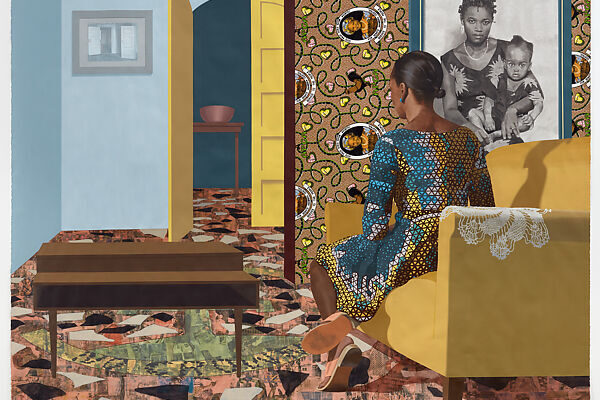Cubism, an art movement that emerged in the early 20th century, has been reimagined and reinvented by countless artists over the years. Today, we’re taking a closer look at four contemporary artists who are putting their own spin on this revolutionary style.
First up is New York-based artist, Julie Mehretu. Known for her large-scale paintings that combine abstract and architectural elements, Mehretu creates intricate, layered works that draw the viewer in. Her use of bright colors, geometric shapes, and fluid lines evoke the spirit of Cubism, while also incorporating a distinctly modern sensibility. Her work challenges our perception of space and time, making us question our relationship to the world around us.
Next is Nigerian-born, Los Angeles-based artist, Njideka Akunyili Crosby. Her work blends traditional Nigerian patterns and motifs with modernist elements, creating a unique fusion of cultures. Her use of fragmented images and multiple perspectives harkens back to the Cubist tradition, while also bringing something new to the table. Her paintings are at once personal and universal, exploring issues of identity, migration, and belonging.
Third on our list is London-based artist, Lynette Yiadom-Boakye. Her portraits feature mysterious, fictional figures that challenge our preconceived notions of identity and representation. Her use of color, light, and form evoke the spirit of Cubism, while also transcending its boundaries. Her work is both captivating and elusive, leaving the viewer with a sense of intrigue and wonder.
Nathalie Du Pasquier is a French artist and designer who was a founding member of the Memphis Group, a design collective that revolutionized the field of furniture design in the 1980s. In recent years, Du Pasquier has turned her attention to painting, creating vibrant, colorful works that are inspired by the geometric forms and bold colors of Cubism. Her work blurs the boundary between art and design, with many of her paintings featuring abstract forms that resemble furniture or architectural elements.
Last but not least is Los Angeles-based artist, Mark Bradford. Known for his mixed-media paintings that incorporate found materials, Bradford creates works that are both visually stunning and politically charged. His use of collage, layering, and fragmentation are reminiscent of the Cubist style, while also incorporating a contemporary urban aesthetic. His work addresses issues of race, class, and inequality, making a powerful statement about the world we live in.
In conclusion, these four artists are just a few examples of how Cubism continues to inspire and influence contemporary art today. Each artist brings their own unique perspective and interpretation to this revolutionary style, creating something new and exciting in the process. As Pablo Picasso once said, “Everything you can imagine is real.” These artists prove that imagination, creativity, and innovation are the keys to reimagining the past and shaping the future of art.


